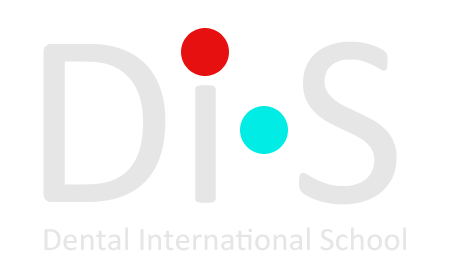Reference Position Centric Relation (CR), Centric Occlusion (CO), Neuro-Muscular RP
.png)
Reference Position Centric Relation (CR), Centric Occlusion (CO), Neuro-Muscular RP
6 lessons
Duration: 5 h 48 min
Reference position – a key step to successful dental treatment!
Join renowned specialists Nazzareno Bassetti, Jean-Daniel Orthlieb, Giorgio De' Luca, and Michael Miyasaki, and learn the full protocols to determine the reference position for your occlusal rehabilitation and orthodontic cases.
During the course, you will learn about:
– Reference position (RP) registration rules and working with occlusal planes
– Protocols for determining centric relation (CR), centric occlusion (CO), and neuro-muscular therapeutic reference position (RP)
– Protocols for designing occlusal splints to obtain a neuro-muscular reference position (RP).
-
1. Reference position. Working with the occlusal plane1 h 39 min
-
2. Definition of the reference plane36 min
-
3. The concept of mandible reference position and the vertical demention of occlusion22 min
-
4. CR registration using neuromuscular approach. How to achieve stable results1 h 30 min
-
5. Neuro-Muscular Reference Position for Diagnostic and Therapeutic Goals54 min
-
6. Analog and Digital Determination of Neuro-Muscular Reference Position44 min
Lesson program
– RP registration rules. Detailed protocol
– From ICP to TRP
– Diagnostic protocol
– RP: physiological and deranged
– Occlusal plane and malocclusion development (Sato)
– Occlusal plane control
– Objectives of the treatment plane
– Skeletal classification of the patients
– Digital functional smile design (DFSD)
– Gnatologically guided implantology
– Vertical dimension and aesthetics
– 10 therapeutic concepts.
Recommended for: Functional dentists.
Lesson program
– Use of the facebow for fixing horizontal reference plane
– ARP index
– The use of the facebow as a guide
– Facial asymmetry
– 3 possible options for creating a horizontal reference plane.
Recommended for: Orthodontist, Gnathologist, Prosthetist, Dental Technician, General Dentist.
Lesson program
– Mandible reference position of due to the work of the muscles
– Reproducible positions: ICP and CR
– Stable and unstable ICP.
Recommended for: Orthodontist, Gnathologist, Prosthetist, Dental Technician, General Dentist.
Lesson program
– Occlusion and malocclusion: definition
– Rationale behind the neuromuscular approach to occlusion
– The concept of habitual bite
– Physiologic vs accommodative trajectory
– Available equipments used to diagnose and treat cases via neuromuscular approach
– Patient examination algorithm in the concept of neuromuscular dentistry
– CR registration using neuromuscular approach
– 3 keys to work in the concept of neuromuscular dentistry
– The method of obtaining the registry
– Orthotic: types and advantages of application
– Goals of the phase II of treatment
– What final options are available and an example of approaching a worn dentition rehabilitation
– Framework to approach occlusal stability.
Recommended for: Prosthodontists, Functional dentists, Restorers, General dentists.
Lesson program
– Notions of temporomandibular joint
– Defining the reference position (RP) in clinical practice
– Reference position (RP) according to R. Slavicek
– Defining the neuro-muscular reference position (RP) in clinical dentistry
– Clinical indications for using the reference position (RP) in diagnostic orthodontic and prosthodontic practice
– Protocols for determining the reference position (RP)
– Adaptation of the cranio-mandibular system to the determined reference position (RP)
– Protocols for working with the articulator and facebow to determine the reference position (RP): mounting procedure;
– Digital protocols to determine the reference position (RP).
Recommended for: Orthodontists, Prosthodontists, Functional dentists, General dentists.
Lesson program
– Step-by-step video demonstration of reference position (RP) determination using waxing procedures
– Video demonstration of splint adjustment and designing in reference position on the articulator
– Step-by-step protocols for splint design with digital workflow
– Analysis of clinical cases:
- Determination and designing of a splint in a neuro-muscular reference position.
Recommended for: Orthodontists, Prosthodontists, Functional dentists, General dentists.
Nazzareno Bassetti
Michael Miyasaki
Giorgio De' Luca
-
Jean-Daniel Orthlieb
Creator of the OCTA concept. Professor Jean-Daniel Orthlieb is an educationist, researcher and specialist in Occlusodontology. He received his doctorate in dentistry (DDS) in 1978 from the Faculty of Dentistry, Aix-Marseille University, France. He has published 6 books and more than 130 scientific papers about occlusion, TMD and prosthetic. Research interests: fixed prosthodontic, occlusodontology, craniomandibular disorders.
-
Nazzareno Bassetti
He is the author of the book "THE VERTICAL DIMENSION IN PRTHESIS AND ORHOGNATODONTICS" Integration betwen function and aesthetics. Active member of the Italian Association of Gnatologists.
-
Michael Miyasaki
General dentist with 30 years of experience, USA. Head of the Academy of Minimally Invasive Implantology. Director of Education for the Pacific Aesthetic Continuum. Maintains a private practice in Sacramento, CA, focused on comprehensive dentistry and function.
-
Giorgio De' Luca
Dental specialist since 1987, with experience in conservative, prosthetic, and surgical dentistry.
Actively involved in continuing education and professional development, collaborating with Viesid in Vienna, IAAID, and the Italian Society of Gnathology.

